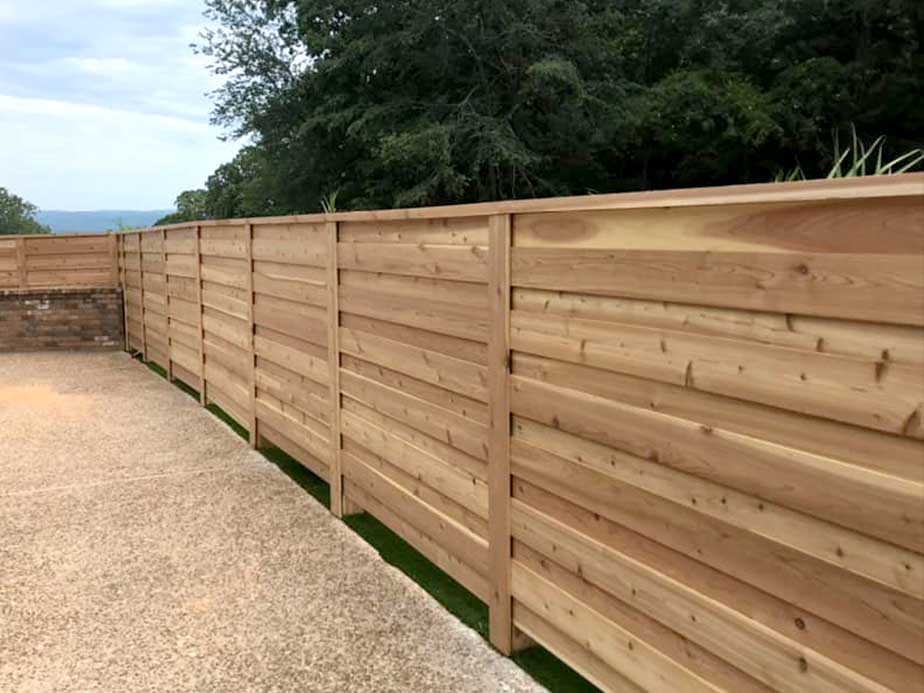All Categories
Featured

As sustainability ends up being a significantly important factor to consider for homeowners, even more individuals are transforming to environment-friendly fencing materials. Whether you're developing a fence for privacy, safety, or visual functions, picking products that decrease ecological effect is a fantastic means to contribute to a much healthier earth. Below's a consider the leading eco-friendly fence materials readily available today and their advantages.
- Bamboo Fence: Sustainable and fast-growing. Bamboo is just one of the most sustainable fence materials on the market. Unlike traditional timber, bamboo is exceptionally fast-growing, which indicates it can be harvested without depleting woodlands. This makes it an extremely eco-friendly resource, with some species growing up to three feet in a single day.
Environmental Advantages: Bamboo absorbs a lot more co2 than several other plants, aiding to balance out greenhouse gases. Its quick growth price means it can be harvested on a regular basis, making it a renewable product. Toughness: Bamboo fencings are naturally immune to parasites and degeneration, specifically when effectively treated, decreasing the need for chemical treatments. Aesthetic Appeal: Bamboo provides an unique, natural look that enhances both contemporary and conventional landscape design designs. While bamboo is an excellent choice, it's essential to guarantee that the bamboo made use of is sensibly sourced to prevent contributing to environmental degradation.
- Recycled Metal Fence: Multiple-use and durable. Recycled steel fence, such as light weight aluminum or steel, uses an environment-friendly alternative to conventional wood fencings. These metals are typically made from recycled products, minimizing the need for new mining and the ecological influence linked with removing basic materials.

Environmental Advantages: Steels like aluminum and steel are 100% recyclable, indicating they can be recycled and repurposed indefinitely without losing top quality. Sturdiness: Metal fencings are unbelievably sturdy, immune to weather, pests, and wear, making them a long-lasting option that does not require to be changed frequently. Low Upkeep: Recycled metal fencings call for marginal upkeep and do not require to be painted or sealed on a regular basis, minimizing the requirement for extra chemicals. The main downside is that steel fences may not give the very same personal privacy as timber or vinyl options, as they can have voids relying on the style.
- Recycled Wood Fencing: Sustainable and All-natural. For those who like the traditional appearance of timber however want an eco-friendly option, recycled wood fencing is an outstanding selection. This material is made from recovered wood from old structures, pallets, and even furniture, diverting these materials from land fills.
Environmental Benefits: Using recycled timber protects against the need to cut down brand-new trees, aiding to preserve woodlands and decrease deforestation. Visual Charm: Recycled wood supplies a rustic, all-natural appearance and can be personalized to suit any home style. Sustainability: Because it is sourced from existing timber items, recycled timber doesn't require new processing, which lowers power consumption and carbon exhausts. While recycled wood fences are an environment-friendly alternative, they may need more maintenance with time than metal or bamboo fencings, as timber can be susceptible to degeneration and pests if not appropriately dealt with.

- Living Fencings: Natural and Environment-friendly. Living fences, which are made from dense plantings like bushes, bushes, or trees, offer a entirely all-natural and green option to traditional secure fencing products. These fences not only supply privacy but likewise enhance your yard with beautiful plant.
Ecological Advantages: Living fencings can soak up carbon dioxide, provide environment for wildlife, and improve air quality. Sound Reduction: Dense plantings can serve as all-natural audio barriers, lowering website traffic sound or other undesirable sounds. Visual Charm: They add a soft, natural aesthetic to any kind of building and can be tailored to fit any design. While living fences are green, they do call for regular maintenance such as trimming, watering, and in some cases pest control.
- Hemp Fencing: Eco-friendly and Solid. Hemp is one more lasting material that has actually made its way into the secure fencing industry. Hemp fences are made from strong hemp fibers that are woven together to create durable and green panels.
Ecological Benefits: Hemp grows swiftly and needs marginal water, making it a resource-efficient plant. When no longer required, the product is naturally degradable and can be composted. Stamina and Durability: Hemp fencing is surprisingly solid and weather-resistant, making it suitable for many environments. Sustainability: Hemp farming needs fewer chemicals and fertilizers than standard plants, making it an environmentally liable alternative. Nonetheless, hemp secure fencing may not be as commonly readily available as other products, depending upon your location.
Final Thought: Sustainable Choices for Every Demand. Choosing environment-friendly secure fencing products is a great means to lower your environmental impact while still accomplishing the personal privacy, protection, and aesthetic you desire. From fast-growing bamboo to recycled wood and metal, there are a range of sustainable alternatives that can assist you develop a beautiful, useful fencing while supporting a healthier earth. By considering factors such as longevity, upkeep, and environmental influence, you can pick the best environmentally friendly fencing material for your demands and way of life.
Latest Posts
Take Advantage of Special Auto Repair Offers in Chicago at Montclare Auto Repair
Published Jun 01, 25
1 min read
Seamless Aluminum Gutters: The Smart Option for Your Home
Published May 25, 25
1 min read
Learn Why Chicago Drivers Pick Montclare Auto Repair for Dependable Service and Huge Savings
Published May 23, 25
1 min read
More
Latest Posts
Take Advantage of Special Auto Repair Offers in Chicago at Montclare Auto Repair
Published Jun 01, 25
1 min read
Seamless Aluminum Gutters: The Smart Option for Your Home
Published May 25, 25
1 min read
Learn Why Chicago Drivers Pick Montclare Auto Repair for Dependable Service and Huge Savings
Published May 23, 25
1 min read